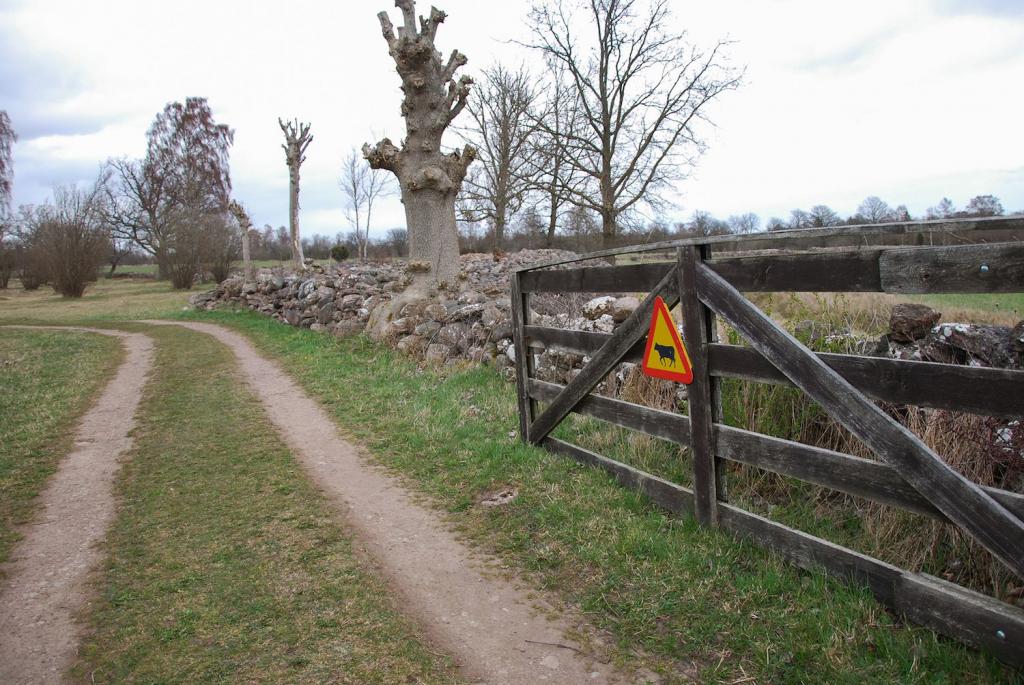At any site, the establishment of a public easement is possible, as well as private. The encumbrance of the land is possible in relation to part of the allotment, and not the entire area. When imposed, the cost of the site during the sale decreases, and in some cases there are costs in a larger amount than originally assumed (sometimes before the loss of the entire site). The most burdensome view is when the public easement is established indefinitely.
Definition
Paragraph 5 of Article 23 of the Land Code states that the easement burden on a site may be minimal. Thus, it is unacceptable the occurrence of significant inconvenience, as well as material losses and non-pecuniary damage associated with this. Despite the fact that this paragraph is basic, it is often ignored by the courts that consider relevant disputes. As a result, the landowner becomes almost powerless in front of state structures.

Private and public: differences
The peculiarity of a private easement is as follows:
- Citizens who are building a house turn to a neighbor to temporarily use some part of their site to ensure transport accessibility, for example, with the purpose of transporting building materials for building a house.
- If it is inconvenient to go around a land plot, neighbors may ask the owner to allow cattle to pass through his territory.
Unlike private, a public easement is established in the public and state interests. The state may initiate this process. But also the initiative may come from the citizens themselves. This easement will be imposed in the following cases:
- If there are mineral deposits near the residential area. In this case, the state will allow the implementation of exploration.
- If residents of the suburban area ask for the construction of a road or metro, the construction of which is impossible without affecting the interests of landowners.
- There is a decision to lay a new gas branch.
A private easement may be established voluntarily or forcibly. In the first case, residents agree on this by concluding an agreement. In the second case, the relevant decision is made by the court when interested parties appeal to this instance.
A public easement is established without resorting to a judicial authority through the adoption of a normative legal act. If an emergency is introduced, the owner of the site has the right to receive a cash payment that compensates for losses associated with the burden. The cost of servitude is indicated either in the agreement or in a court order.
Private and public: general provisions
Some aspects of both types of easements are of a similar nature. They are as follows:
- A private or public easement is established in the public interest.
- In both cases, the owner retains the right of ownership and can carry out any transactions with land allotment.
- The burden of servitude passes with ownership of the new owner.
- Both private and public easements are officially established only after state registration. This is provided for in paragraph 9 of Article 23 of the Land Code of the Russian Federation.

Establishment of a public easement
It can be imposed by the Government, constituent entities of the Federation, as well as local authorities. The goals of public easement are as follows:
- Passage or passage through the land plot, including water bodies or to the shore.
- Repair of communications, utilities, roads, railways, stops designed for public transport.
- Water intake.
- Access to pasture, hayfields.
- Fishing, hunting or fish farming.
- Run pets.
- Drainage type work.
- Geodetic, gravimetric, or demarcation work.
- Research, geological and exploration work.
If the land is reserved by the state authority or local authorities, the public land easement is established only for a certain period. Moreover, this period can last no longer than the reservation period.
Installation consists of the following algorithm of actions.
- Filing an application by persons interested in imposing a public easement.
- Holding hearings with the participation of the public (under the protocol).
- Adoption of the relevant regulatory legal act.
- State registration carried out in the USRN.
Application
Public easements may be established for the use of a private territory for various purposes. Regardless of this, the procedure is initiated by submitting an application that legal or natural persons submit to the authorized bodies. The application is considered at the level of the Government of the country, individual entities, as well as local authorities. The appropriate authority is selected depending on the level at which the issue should be resolved.
The application must contain the following information:
- Location and land area.
- Information about the owners.
- Information about the purposes for which public easements are established.
- The burden period.
- Data on persons who are interested in establishing a public easement.
The Land Code indicates how the application should be considered. Then a decision is made. With a positive outcome, the next step is a public hearing.

The meaning of public hearings
The role of this stage is insignificant. Currently, it is most likely of a formal nature. From the side it seems that the state is listening to the opinions of people, but this opinion is only a recommendation. Therefore, decisions are made regardless of what opinion was expressed at public hearings.
Thus, after hearing people, officials still act in their own way. Hearings must be recorded. At the same time, all performances are recorded with the passport data of the participants.
Legal act
After the receipt of the application and its consideration, a normative legal act authorizing a public easement is adopted. The order of establishment is slightly different if the decision is made at the state level. Then comes the relevant law or regulation.
In any case, the documents indicate the type of easement, its purpose and period of validity. They should also contain the following information:
- Information about the site.
- Plan showing the boundaries.
- Cadastral number.
- Information about the owners.
check in
The document becomes effective after the registration procedure. For this purpose, the following documents must be submitted to the registration authority:
- Statement of established form from the owner.
- Cadastral plan.
- NPA.
- A receipt with a paid state duty.
- When representing the interests of the owner by another person, a power of attorney certified by a notary.
Registration will take some time. In this case, the appropriate changes are made to the cadastral plan, carried out by engineers of the land management department. Each registration act in Rosreestr is assigned its own number.
Land surveying procedure
This procedure means setting the boundaries of the allotment of land. In this case, dowels, pegs and other equipment are used.Land surveying is necessary to obtain a cadastral document. To this end, the following actions are performed:
- Engineers check the boundaries and draw up a cadastral plot of land.
- Registration of ownership is in progress.
- When applying easement, it will be necessary to carry out the process of surveying again, and then re-registration.
Paperwork on the ground is often accompanied by red tape. Therefore, some people prefer to buy land, then perform land surveying, and after that contact the Rosreestr. This allows you to avoid contacting this authority twice. Such a procedure is possible if the public easement on the land is established accurately, and the new owner knows about it.
Rumors or draft laws that are under consideration are unlikely to be what owners should be based on when carrying out land surveying. It is better to carry it out only after the relevant regulatory act has been adopted.

Asserting rights: is it possible
When a public land easement is established, various unpleasant “surprises” can await the land owner, namely:
- Compensation for damage is not guaranteed.
- The burden may be much greater than what was originally promised.
A land owner who finds himself in a similar situation has the right to go to court. Unfortunately, at present, the law does not provide for the mandatory payment of costs incurred by the owner. However, in case of emergency, the state can “go to a meeting” and remove the easement (if it is no longer necessary) or withdraw a piece of land from the owner, providing in return monetary compensation or the same allotment of land.
An example from judicial practice on imposing easement on a natural person plot
In life, if a public easement is imposed, the owner will have serious problems in defending his rights and legitimate interests. Often, courts of first instance reject claims. The following example will demonstrate how this happens.
Within the boundaries of the village of Ivanovka, a public easement is established by a legal act for a certain period with the aim of passage of citizens to the shore and reservoir. The owner of the plot of land went to court to challenge the act. At the same time, he argued as follows:
- Local authorities had other opportunities to provide access to the reservoir.
- With limited use of the allotment of land, this right was extended to an unlimited number of people.
The court of first instance rejected the claim, citing the fact that the public easement was not registered. Consequently, formally it does not exist, and therefore the subject of the dispute is absent. The owner appealed to the next instance - the College of Administrative Cases. At the same time, the decision of the court of first instance was canceled, and the case was returned for new consideration.
The reasons for this decision were the following points:
- The absence of registration in the Federal Registration Service is not an obstacle to the consideration of a claim and the recognition of a regulatory legal act as invalid.
- Since normative legal acts of municipal significance come into force immediately after their publication in open sources, citizens should have the opportunity to familiarize themselves with them.

An example from judicial practice on imposing easement on a site owned by a legal entity
If a public easement is imposed on a site owned by an enterprise and management considers the encumbrance illegal, you can also claim your rights in court. The decision of the authorities will be declared invalid if they fail to prove the fact that the easement has been imposed in order to satisfy the needs specified in Art. 23 of the LC RF.
The relevant decision was made by the court in respect of the land owned by IP. The following points served as the basis for this:
- The local authorities did not submit documents confirming the need to encumber the allotment of land with an easement to ensure the interests of the population or the authorities, as well as the lack of the possibility of passage or passage to the respective objects in other ways.
- A normative legal act does not contain the purpose of establishing an appropriate burden.
- The minutes of the public hearings do not contain information about the need for this burden.
It should be understood that a public easement can be established in respect of an indefinite number of persons only when interests are not provided for in a different way. In this case, it is required to prove the impossibility of passage or passage.
In addition, in no case can a public easement be established on a site belonging to the enterprise where hazardous facilities are located. In extreme cases, encumbrance is allowed only on a part of the allotment.

Alienation of land allotment with a public easement
The presence of a public easement does not prevent the owner from disposing of the land at his discretion. Allotment of land can be sold, but you must be prepared for the fact that you will have to incur certain losses. This can be avoided if the public easement is established with the removal of the site. When is such an option possible? Only at the offer of an interested person in establishing a public easement to buy land.
When selling the land to a third party, the owner must notify the buyer of the burden. If this is not done, it is likely that the contract of sale will be invalidated.
In addition to the sale, a plot of land with an easement can be donated or inherited.
Termination of public easement
The easement can be lifted for the following reasons:
- Upon expiration.
- The end of the reservation period of the allotment of land.
- The cessation of the need for its establishment.
- An emergency situation, as a result of which it became impossible to use the site.
- Annulment of a normative legal act on imposing easement by a court decision.
The public easement is not removed automatically. For this purpose, the termination must be registered with the Rosreestr. In this case, changes are again being made to the cadastral plan.

Conclusion
Land owners may one day be faced with a problem such as imposing a public easement. However, this only threatens in cases established by law, as well as the impossibility of another solution to the situation. In addition, the owner has the full right to assert his rights in court if he considers that the public easement was imposed illegally. But in this case, you need to be prepared to overcome many difficulties.
